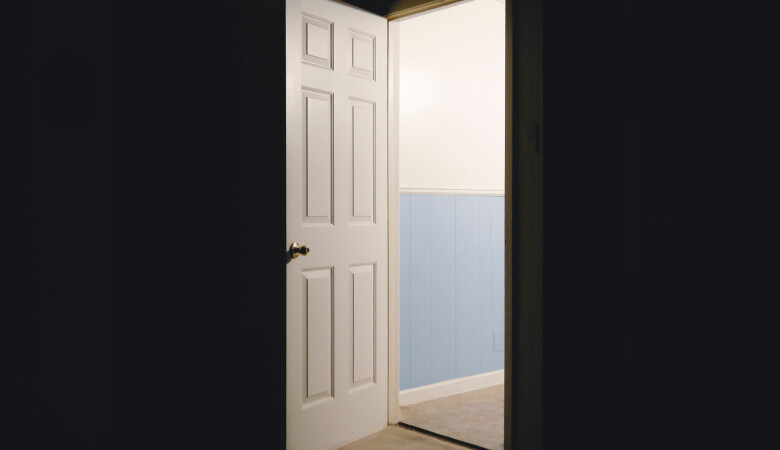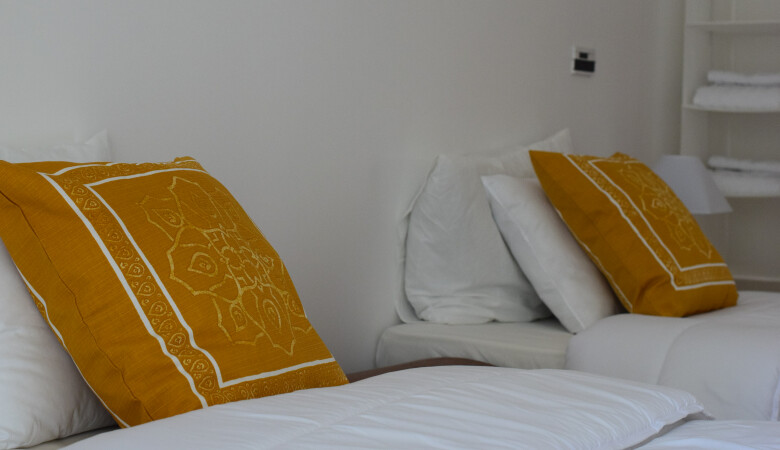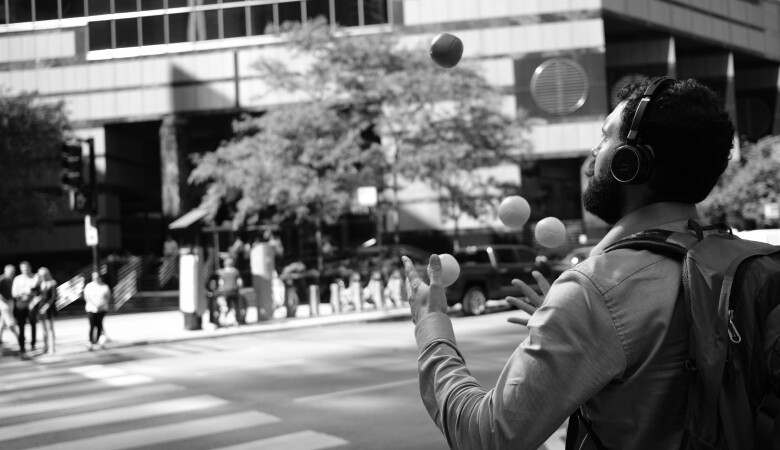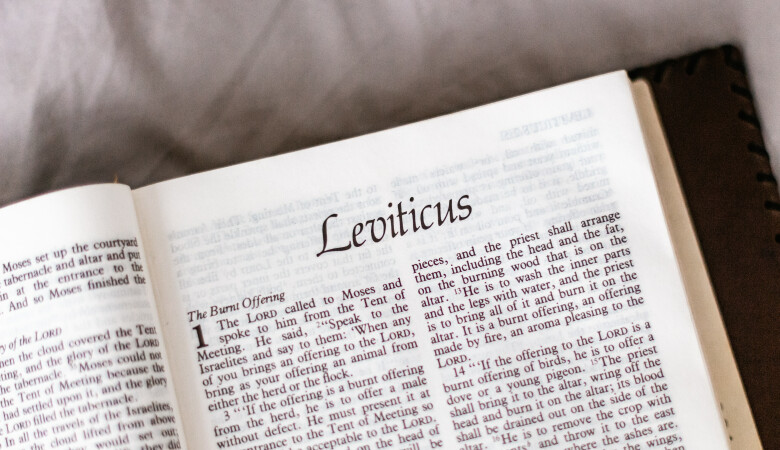This Far You May Come... But No Farther! (Hebrews Sermon 33 of 74)
July 17, 2011 | Andy Davis
Hebrews 9:6-10
The Law of God, New Covenant, Animal Sacrificial System, Worship
Significant Walls in History
In the summer of 2001, I had the privilege of going to China and visit some friends that were serving the Lord there. Then we had a little bit of time in Beijing, and like so many tens of thousands of tourists that visit Beijing, I also wanted to go to the Great Wall of China. So, we made that trek in a taxicab, and went up there with thousands of people to walk for a little stretch on the Great Wall of China. It's really an impressive structure, an amazing feat of human engineering, 5,500 miles long. If you think about it, over 5,000 miles long built over three centuries, mostly over three centuries, in the 14th to the 17th century, built with the blood of slave labor of people just who are crushed by the effort under the lash of the whip of these emperors who had one desire, and that was to keep the Mongol warriors out. They wanted to keep the Mongols out. The problem with that was that there were gaps in the wall and it didn't reach to the end. And so these folks just rode around it. But there it stands. No, it cannot be seen from the moon. They say it's the only human built structure... It cannot be seen from the moon. It can barely be seen from a shallow orbit, but it's still impressive.
And I got to thinking, as I was meditating on this text today, of the efforts that human beings have made to build walls to keep people from moving where they want to go. That's the purpose of a lot of walls that are built. The Great Wall of China was built for that purpose. Hadrian's Wall, in the northern part of England, built to keep the savage northern Scots warriors, the Picts and others, from coming down and made a line of demarcation, this is where the Roman Empire ends right here. Think about the Berlin Wall, built in 1961 by the East German authorities around the circumference of West Berlin to keep East Germans from fleeing to freedom. And what an incredible time that was, as I'm sure you remember, 1989, when the wall finally came down.
But all of those walls were really ineffective because as ingenious as the wall builders are, the people who want to get in are even more ingenious and more determined, and they're just going to do it. Over 5,000 people escaped past that wall, the Berlin Wall, into West Berlin for freedom, relentless drive to get where they want to go. But I say to you, the most imposing wall that has ever been built was made of fabric and it enclosed the holy of holies, it was established by God, it was hanging from flimsy acacia wood poles, it was completely movable. And it was a message from Almighty God, saying to us, as a sinful human race, we are not welcome in His holy presence. This fabric could have been cut with a knife or moved aside with the motion of the hand, but the reality could not so easily be moved aside. We are not welcome in the presence of a holy God, apart from the ministry of Jesus Christ. We are not welcome.
And again, and again, in the Book of Exodus, the Lord was giving that message, an amazing kind of rhythm in some of these passages how the Lord will lay out some things. They were powerfully attractive to human beings, saying, "Come here, come here, come here, come here." And then as soon as we start to move, saying, "No more, you can't come any closer." You look at the burning bush, God does that with Moses, he puts out that flame, and the bush is not consumed and it's a miracle. And Moses, just wandering there, in the back side of the desert with his father-in-law's sheep, just another day in the desert looking after daddy's sheep, and there's this bush as though God didn't know what magnetic effect it would have on Moses. And Moses saw, and he said, "I will go over and see this strange sight, why the bush does not burn up." And the text says, "When the Lord saw that he had gone over to look, God called to him from within the bush, 'Moses! Moses!' Moses said, 'here I am.' [And then the next words were] 'Do not come any closer.'"
Same thing in Exodus 19, where God put limits around the mountain, as we've talked about before, and then descends with such a display of divine presence and power and majesty that God knew very, very well that the people would be attracted to the mountain, not running away from it, they want to be near God. That's in your heart. We are designed, we are built for God. We are built for fellowship with God. And so God, showing such a clear display of His majesty, of His greatness and His power, even though terrifying signs, still commanded that some limits, some wall of some sort, don't know much about it, but be put at the base of the mountain and a command be given that the Israelites must not force their way up the mountain unless they be put to death.
Same thing in Exodus 24, when God commanded Moses with Aaron, Nadab and Abihu, Aaron's sons, and the 70 elders of Israel, to come up the mountain now. Now they're invited to come up, you can read about it in Exodus 24, but Aaron and the others must not come up, only Moses may approach. And the command to the rest of the elders of Israel was, "You are to worship at a distance." "Worship at a distance," that's the old covenant. The attraction, the compulsion to get near God laid out there. And in Exodus 24, God showed those elders a vision of the God of Israel above an expanse, like sapphire, God showed Himself, He revealed Himself to them. But the command was still hanging over them, "Don't come any closer." "You must worship at a distance."
And so in the fullness of time, God, in Exodus, commanded that this tabernacle be built. We've talked about it. We'll go into some details again today to remind ourselves what we're talking about. But there is this place, a focal point, a place of worship, where the Israelites were to worship, that's where they were to go, that's where they were to make their sacrifices. It was a focal point, a place of worship. And God graced that tabernacle, that simple tent, with a magnificent display of His presence. The glory of God filled that tabernacle. A glory cloud filled it, and right there at the end, in Exodus 40, the text says very plainly that Moses could not enter because of the glory of the Lord. It's the same message, do you not see it? God is saying by the glory, "Come, come closer. You want to see this. This is very attractive to you, isn't it?" Very attractive, very interesting, a passion to get near God. And then that command, "You must not get any closer. You may not come."
Same thing happened when Solomon built the temple. You remember that, how he built the temple. And the Glory of God filled that temple, and the priest could not enter. It's the same thing again and again. And so we have this attraction, this yearning to be near God, but we are told by this tabernacle, the lesson of the tabernacle in our text today, the Holy Spirit was teaching by this tabernacle, "You may not come into My presence."
A New Message: Come to the Father Through Jesus!
Now, the joy for me, as I preach this text, is to know that that's old news, friends. It's old. That's what the Holy Spirit was teaching back then. He's no longer saying that to us now. Now he's saying, "Come near to me. I am the way, and the truth, and the life," said Jesus. "No one comes to the Father except through Me." But if you turn it around, "you may absolutely come to the Father through Me." Hebrews 10, we'll get to it, maybe, but at any rate, eventually, that Jesus is for us a new and living way into the very presence of God.
So, as we come now to Hebrews 9 and 10, we're looking at aspects of the covenant, the overall message of the Book of Hebrews, the superiority of Jesus Christ and of the new covenant that He brings. A specific focal point of this lesson was that these first century Jewish believers in Christ were going to have a very, very hard time giving up their traditions of worship. And so again, in our text, this lesson is for the present time, He says, to especially help first century Jewish believers in Christ to give up on the trappings the physical aspects of old covenant worship because their time is done now. And so the supremacy of Jesus Christ, the supremacy of the new covenant, all of these things.
But now as we come to be Hebrews, this section, Hebrews 7, 8, 9, 10, especially Hebrews 9 and 10, we're looking at specific details of the old covenant sacrificial system that are now fulfilled, that are superseded by what Christ has done in a marvelous way.
And as I was trying to organize this in my mind this morning, I had this thought that came to me. Recently, we were on a mission trip to Nepal, and we had one very, very long day in which we were sitting on an unmoving bus for, on and off, a total of seven plus hours. That was tough. You just run out of things to do. I was sitting next to Jenny and we were playing 20 Questions, which I don't actually love. It's okay for a little while. And 20 Questions always begins the same way, you have to decide if it's a person, a place, or a thing. Remember that game? And so that's the first few questions that you ask, is to ascertain that. And I think that that's a good kind of three-part summary of what we're looking at here, superior person, superior place, superior thing. How is that? That came to me this morning. Isn't that exciting, 20 questions used in homiletics. All right?
But Christ is superior as our great high priest. He is holy. He is the Son of God. He is sinless, pure, blameless, does not need to offer sacrifices for His own sins. He will never die, but the supremacy of Christ has been the unifying theme all the way through. We've begun to look at now this superior place, this tabernacle that Jesus ministers to the true genuine tabernacle in heaven, not merely an earthly one, looking at the details of that last time, we'll look at it some more today, but again Christ ministering in a superior place. And then the actual blood that is offered is superior. The sacrifice itself is a superior sacrifice, once for all time the blood of Jesus, because the blood of bulls and goats can never take away sins. And so that's kind of a summary of what we're looking at now.
I. Last Week: The Tabernacle—Established by God as Merely a Symbol
The last time, as we looked at the tabernacle, Hebrews 9:1 through 5, the actual tent, remember I mentioned the temple was never even mentioned in the Book of Hebrews. I think the author really wants to get at what God directly clearly established through the law of Moses, the old covenant, and the tabernacle was it. It was a tent, it was set up in a certain pattern, look at verses 1 and 2, Hebrews 9:1 and 2, "Now the first covenant had regulations for worship and also an earthly sanctuary. A tabernacle was set up." A tabernacle is just a tent. And so this tabernacle, this is one of the key ideas in the Book of Hebrews, the things that are superseded were glorious. They weren't bad. There was nothing wrong with them. We're not going to denigrate them. We're not going to talk down about them or insult them. They had a purpose. They were glorious in their own time and in their own way. God set up that tabernacle.
It was an earthly sanctuary, it was man-made and temporary, but it was made at the command of God. The Israelites didn't do anything wrong in making it. They were obeying God and doing exactly what he wanted done. It was a divided sanctuary. There was the Holy Place and there was the Most Holy Place. The author gives us that two-part division of the tabernacle. There were three symbols in the holy place, as you remember, Verse 2. "In the first room, the Holy Place, where the lampstand, the table and the consecrated bread, this was called the Holy Place." And so we talked about the symbolic aspects of those things.
And then in the Most Holy Place, the author gives us seven symbols, in Verses 3 through 5. "Behind the second curtain was a room called the Most Holy Place, which had the golden altar of incense, the gold-covered ark of the covenant, and this ark contained the gold jar of manna, Aaron's staff that had budded the stone tablets of the covenant. And above the ark were the cherubim of the Glory, overshadowing the atonement cover." So these are the seven symbols of the Most Holy Place, or what we have in the King James Version, the Holy of Holies. Holy of Holies was a 10 x 10 x 10 cube made up of fabric, as we've said, a symbol of God's throne room, a symbol of God's dwelling place. That's what it signified.
II. The Priestly Ministry: Established by God But Ineffective
So, now we get into the actual priestly ministry. God intended that this tabernacle be used. It wasn't to be a museum where you would walk through and look at artifacts and walk out, but it was to be a kind of a living parable, something that was going on day after day. And so when everything was arranged like this, when everything had been set up according to the commands that God had given Moses, the priests entered and got busy. They carried on their priestly ministry. And so in Verse 6, "The priest entered regularly into the outer room to carry on this ministry." And so there they were, and it was a busy place, day after day after day, these priests were offering up a variety of sacrifices and offerings, peace offerings, fellowship offerings, and there were sin offerings, and there were drink offerings and grain offerings, and all these kinds of things that the Lord had prescribed. And so it was a busy place, and the priests were constantly active and ministering.
But the focus of our text here is not that outer room, that busy place where the priests were carrying on that daily morning and evening-type ministry. The focus here, the weighty focus here is the inner room, the Most Holy Place, the Holy of Holies, and the message of these verses is that no one was welcome there except the high priest, and that only once a year. This is all about restriction. Do you see it? It's all about what was not permitted. Restricted access. Look at Verse 7, "But only the high priest entered the inner room, and that only once a year, and never without blood, which he offered for himself and for the sins the people had committed in ignorance." And so there was that restricted access.
Now, all of Israel was restricted. If you weren't a Levite, you were even getting into the tabernacle, that part of the tabernacle at all. But I would have to say that no one but the Levites had such an intense, if we can even say, in-your-face reminder that they were not welcome in the presence of God because, there it was, that curtain, day after day after day, they got to look at it all the time and know that they were not allowed, on penalty of death, to go into that place. Constant reminder, "You are not welcome here. You are sinful and I am holy, and you may not come here."
And so they carried on their ministry. But one day a year, one special day a year, one man, designated by the law of Moses, a descendant of Aaron, wearing magnificent priestly robes ordinarily, but then just, in Leviticus 16, a simple white garment, linen garment would go into the Most Holy Place. Leviticus 16 describes this very powerfully. It's well worth reading, if you want to take some afternoon time and read about it. All of the strictures or requirements for that, very, very powerful. But he entered, and the first thing he did was offer the blood of a bull for his own sins, and then he went back out and offered a goat and brought the blood of the goat in for the sins of the people. And he offered this blood for, it says, sins which he and the people had committed in ignorance.
Now, some, in church history, the Socinians are their name and others have stated that this phrase in particular shows that in the old covenant there was no provision made for willful sins. None. Only provision made for sins committed in ignorance. Friends, that is completely false. In the old covenant, there is no provision made for the forgiveness of sins at all. The blood of bulls and goats could never take away any sin, willful or an un-willful. So, don't go with the Socinians on this one. I know you were tempted in the Socinians direction. But the fact of the matter is that sins, whether willful or done in ignorance, is still sin. The ignorance mentioned here in Verse 7 really has to do with the ignorance all of us have of Almighty God Himself. Isn't that the problem? Righteous Father... John 17, in Verse 25, "Righteous Father, though the world has not known you, I have known you."
Earlier in that same priestly prayer, in John 17, "now this is eternal life that they may know you, the only true God in Jesus Christ, whom You have sent." All of us ignorant of God at some level. Oh, I'm yearning for a full education. Aren't you? Yearning to know God and see Him face-to-face, and know Him as He has known us, as beautifully and completely as we have been known. But because we do not know God, because we do not know His holiness, because we do not know His word, that's why we sin. Jesus said, "You're an error because you don't know the Scriptures or the power of God." So, these are sins that we commit in ignorance. And that was what was symbolically offered with the blood of animals in the Holy of Holies on that one day of atonement.
III. The Holy Spirit’s Lesson: The Way In Not Yet Revealed
But what is the lesson of all of this? Well, look at Verse 8, the Holy Spirit had a very clear lesson in all of this. "The Holy Spirit was showing by this," it says, "that the way into the Most Holy Place had not yet been disclosed as long as the first tabernacle was still standing." Now, first, it's just beautiful, isn't it, how the author in Verse 8 ascribes the teaching ministry here to the Holy Spirit. In the Old Testament, all of the laws of Moses, the regulations for worship, all of that, according to this verse, were coming from the Holy Spirit. The Holy spirit communicated the will of God to man through the prophets, through Moses. And the Holy Spirit had a lesson with the tabernacle. The Holy Spirit was intending Israel to learn something. And what was the Holy Spirit teaching by the tabernacle? Well, the author tells us in Verse 8, "that the way into the Most Holy Place had not yet been disclosed." Very, very powerful.
What does this mean, "the way into the Most Holy Place"? Well, the tabernacle itself is just a symbol, an earthly symbol of the heavenly reality. The Most Holy Place represents the place where God dwells, where His throne is, where all of that hundred million angels are encircling Him, and worshipping Him, and praising Him. It's the presence of Almighty God, the Most Holy Place, that's what the tabernacle symbolizes. When God came down with that glory cloud, He was saying that "This is a symbol of My dwelling place. It's where I live." And what the Holy Spirit was teaching is that the way in had not yet been disclosed as long as we're under the old covenant.
Now, if you knew what to look for, the lesson was still hopeful, wasn't it? God wasn't rubbing our face in it. God wasn't saying, "I am holy, you're wicked, and you will never be allowed into My presence." Just by setting the tabernacle up, in effect, He's saying, "Some day, dear friends, some day there will be a way into My presence, just not yet." And so the words "yet," "not yet disclosed," imply that at some point the fulfillment would come and the restriction would end. But it didn't come in the old covenant. The ministry of the tabernacle, the ministry of the sinful priests, the endless repetition of animal blood, all of it testified to the absolute ineffectiveness of the old covenant to deal with sin. We are not welcome under the ministrations of the old covenant into the presence of a Holy God. It's not effective. It's not good enough.
IV. Unable to Clear the Conscience of the Worshiper
And so the endless repetition testifies to this, the fact that the priests had to offer sacrifices for their own sins first testifies to all this, but for the average rank and file Israelite, there was a far deeper proof than that. Far deeper. It had to do with their own guilty conscience. Deep in their hearts, they knew that they were sinful. In their hearts, they knew that they could not come as they were. With the blood of bulls and goats, they could not come into the presence of such a terrifying and Holy God. These ministrations, the work of the old covenant was unable to clear the conscience of the worshipper.
Look at Verses 9 and 10, "This is an illustration," it says, "for the present time, indicating that the gifts and sacrifices being offered were not able to clear the conscience of the worshiper." Verse 10, "They are only a matter of food and drink and various ceremonial washings, external regulations applying until the time of the new order." And so the author says that the tabernacle was an illustration, really a living parable. It was a type, it was a symbol, it was teaching us something. So, the tabernacle is an illustration. And he says, it is "for this present time."
I already touched on this a few moments ago, but let me reiterate what I said. I think these first century Jewish Christians had a tremendous burden that very few succeeding generations would ever have, the burden of letting go of all of their traditions and worshipping in a whole new way. And so this is an illustration for the present time, meaning the time when the author himself was writing in the days immediately after the death and resurrection and ascension of Jesus. But I don't think that's enough. I think that's true, but isn't it for us, too, 20 centuries later? Aren't we still in the final days? Aren't we in the same era of redemptive history that our brothers and sisters of the first century where we are? So, it's an illustration for us, too, for the present time, for us today. An illustration that the accusations of a guilty conscience cannot be dealt with any other way than by the blood of Jesus.
And we're going to talk more, not today, but... Next time, preach on Hebrews 9, we're going to talk about the power of Jesus to cleanse a guilty conscience. And how sweet is that? How many times, how often, how many days have you labored burdened under a guilty conscience even as a Christian? And so this is an illustration for now, for the present time, to know how you can escape a guilty conscience.
David knew all about that when he committed that terrible sin with Bathsheba. And then he had Uriah killed to cover up his sin, and how for a year, it seems, as you read between the lines in Psalm 32, the baby was born and all that, that he fought the convicting work of the Spirit, he fought, he hardened his heart. He had many sleepless nights, he had physical ramifications, physical illnesses perhaps. And at core, it was all about a guilty conscience. And in Psalm 51, he rejects forever, for the old covenant people, the effectiveness of animals in dealing with that. I would offer a thousand bulls if it could get rid of my guilt, but it can't. Sacrifices of God are a broken and contrite heart, that's what you will not despise, but it's not going to be animals. David knew offering some sacrifices would not cleanse his guilty conscience.
And so the Holy Spirit was teaching that there is a different, a new and living way that does address a guilty conscience and addresses actual spiritual guilt before such a holy God, and welcomes us right into the presence of God, there is going to be a way. That's what he was saying in the Old Covenant. And so these things were only set up temporarily, a matter of food and drink, and ceremonial washings, and external regulations. Temporary, just temporary. Until when? We look at Verse 10, "until the time of the reformation." Isn't that beautiful?
Friends, we are living in that now. This is the real reformation. I'm not in any way denigrating church history and what Martin Luther did. Praise God for it. Keep calling it the reformation. I will. At any rate, this is the genuine reformation. The word here in the Greek implies something like a law that was established but did not achieve the end for which it was established, and you need to revoke it and write a new one. That's how the word is used. Or of a building that's ramshackle and falling down and needs to be renovated. That's what the old covenant was. It wasn't working, it was ineffective. It could not make us holy in the sight of God. And so God had to set it aside and establish a new order. And that new order, friends, is the new covenant in the blood of Jesus.
That's the lesson of the tabernacle. And that's the glorious good news for us today, the way in to the Holy of Holies has been revealed now in Jesus. Jesus has shown us the way, He's proclaimed the way. He is the way in to the very presence of Almighty God. The old tabernacle has been replaced by the body of Christ, by the heavenly reality that it symbolized. The Most Holy Place is no longer a 10 x 10 x 10 cube of linen curtains and acacia wood polls. It's not that anymore. It's the actual presence of God in heaven. And there are spirits of righteous men and women made perfect in the presence of God now, that's the effectiveness of the blood of Jesus.
The way in has been revealed. The blood of the sacrifice, the blood shed on the cross by Jesus Christ is sufficient for you and me to draw near to God. And that is the glorious good news that I have the privilege of proclaiming today. God isn't saying what he used to say anymore. He's not laying out all of these attractions, and then as we start to move toward Him puts up a wall and says, "Stop, this far you may come and no further." He's not doing that anymore.
Now, neither is he opening up 50 different ways into His presence. No, no, no. There is one and only one way. We just got to minister to Tibetan Buddhists. Tibetan Buddhism offers no way in to the presence of God. Just works religion, really like animism, it's not much different than some of the things you see in tribal regions in other places. It's no way in. Neither is Islam any way in to the presence of Almighty God. Neither is our good works or moralism, or Judaism. Christless Judaism is no way in to the presence of God. There is one way in and only one way, and His name is Jesus.
V. The Good News: The Way In Has Been Revealed in Christ!!
And so it says very plainly, and you can turn over if you want in Hebrews 10:19-22, "Therefore, brothers, since we have confidence to enter the Most Holy Place by the blood of Jesus, by a new and living way opened for us through the curtain, that is, his body, and since we have a great high priest over the house of God," what does it say in Verse 22, "let us draw near to God." Now, the word of God is actually commanding you to come. He is actually commanding you to come into the very presence of Almighty God. Don't stay distant anymore because of a guilty conscience. Talk more about that next time, because it says, "Having our hearts sprinkled to cleanse us from a guilty conscience and having our bodies washed with pure water."
VI. Applications
So, what applications can we take from these marvelous verses? First, just marvel at the teaching ministry of the Holy Spirit. Amen? What a great teacher the Holy Spirit is. And how majestic and how perfect it is that He set all of this up, all the old covenant regulation for worship, the tabernacle, all that, it was the Holy Spirit's teaching ministry to us. And not only did he actually do it in space and time, but he moved Moses at the right time to write about it so that we can read centuries later what the Lord wanted us to learn. Marvel at the teaching ministry of the Holy Spirit. Friends, He's still teaching you today, right now. Holy Spirit is active in this room, He's moving through the ministry of the Word, and He is teaching us still. And so marvel at that.
Secondly, learn the various symbolic lessons of the tabernacle. If you didn't hear the sermon that I preached on the symbolism of the outer and inner room and all that, go back and look at that. There are some things that the author doesn't even cover, like the priestly vestments, the way that he carried the plate on his plate, the names of the 12 tribes of Israel, the way he had a gold plate that said "holy to the Lord" on his turban. All of these things, symbols and pictures of Christ, go and study and learn these things.
And why would we do it? It's obsolete. Yes, it's obsolete, but it's a beautiful picture of Christ's finished work on the cross, of His ongoing priestly ministry for us at the right hand of God. Study and learn so that your heart can be strengthened by these things. Celebrate the powerful fulfillment of Jesus Chris. Celebrate Jesus. It's my deepest desire when we come here, that we would have an encounter with a holy and awesome God, and be moved deeply by the holiness and the power and majesty of God, and tremble at that. And along with that, joyfully celebrate what Jesus has done to bring us in and qualify us to be in the presence of such a holy God. Celebrate. I mean, smile. I mean, be joyful. I mean, go out of your field with energy and joy and serve the Lord. Let's celebrate what Christ has done. And let's, in an ongoing forever way, trust, trust, trust the finished work of Christ.
By faith, we are justified. By faith, we will be sanctified. And I've already prayed for you, but if you're here today and you've never trusted in Christ, if you are in a Christless state but you don't want to be anymore, you're feeling a pull in your heart, it's marvelous. We're in the new covenant, gospel grace era now. That pull in your heart can be consummated, you can come all the way right in the presence of God. Trust in Jesus. Turn away from your sins, they're killing you. And if you do not trust Christ, they will destroy you forever in hell. Turn away from them, I plea. Turn away from wickedness and sin, away from lust, away from idolatry, the idolatry of possessions and money and all those things, ambitions, worldly ambitions. They lead to nothing. Turn away from these things. And I plead with you, trust in Jesus, see Him in your minds crucified on the cross, His blood shed, He said the words, "It is finished," the curtain in the temple torn in two from top to bottom, physical evidence that God is saying, "You're welcome to come." Picture him in your mind's eye, go ahead three days, picture him resurrected, walking in a resurrected body, showing his wounds to Thomas, proving that He had risen from the dead, trust in Him, Jesus, for the salvation of your souls.
And I don't want to talk anymore about a guilty conscience, but maybe you can't wait until I preach on that, so let me say right now, if you came in here today as a Christian with a defiled conscience, the blood of Jesus is the only remedy. It's the only one there's ever been. It's an ocean of grace for you. Receive forgiveness, full forgiveness, at the cross, and allow that grace to come and teach you the lesson of the cross, which is this is what it costs to save you from such sins as that, so you grow to hate those sins and turn away from them and do them no longer, walking in repentance and newness of life. Full forgiveness, full cleansing of a guilty conscience.
And finally, just draw near to God every day. What can hinder you? Cleanse from a guilty conscience, commanded by God to draw near, then let's draw near. Amen? Let's come right in the presence of God. Don't stay distant anymore, but come right in to the presence of God. Close with me in prayer.






























